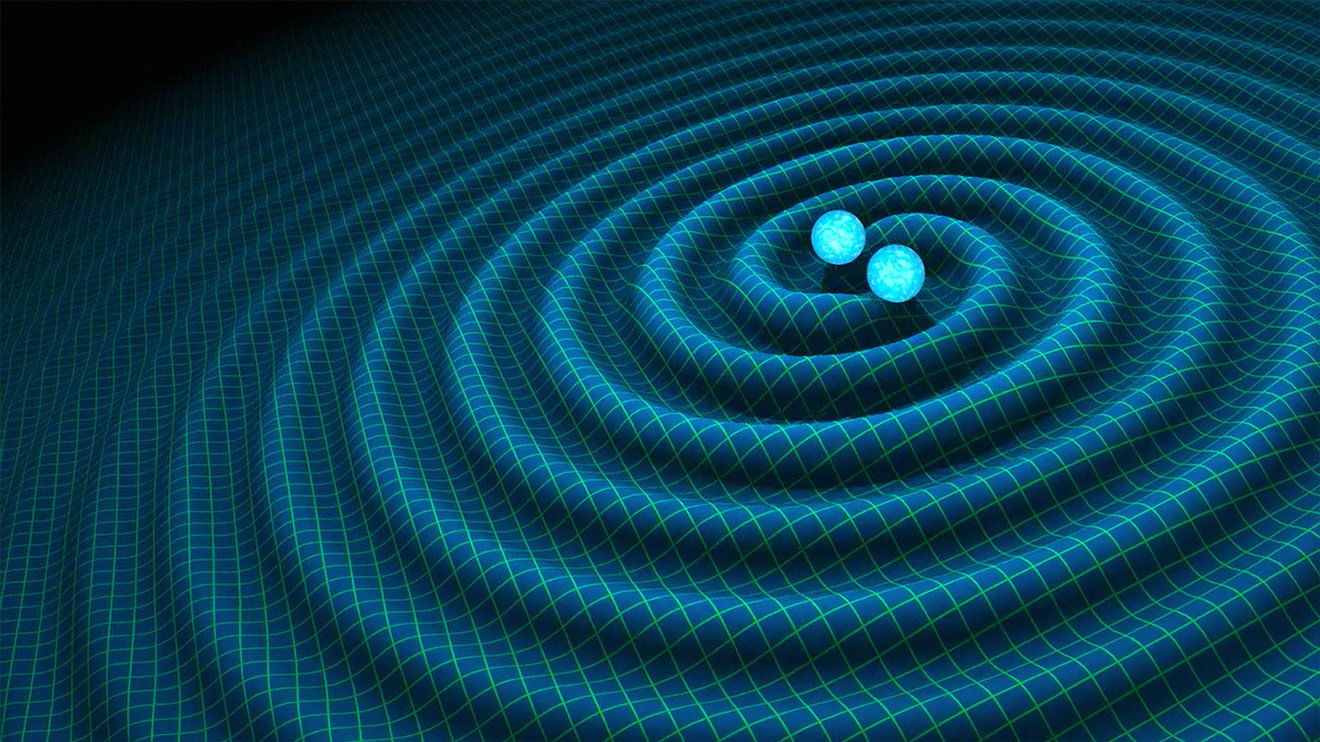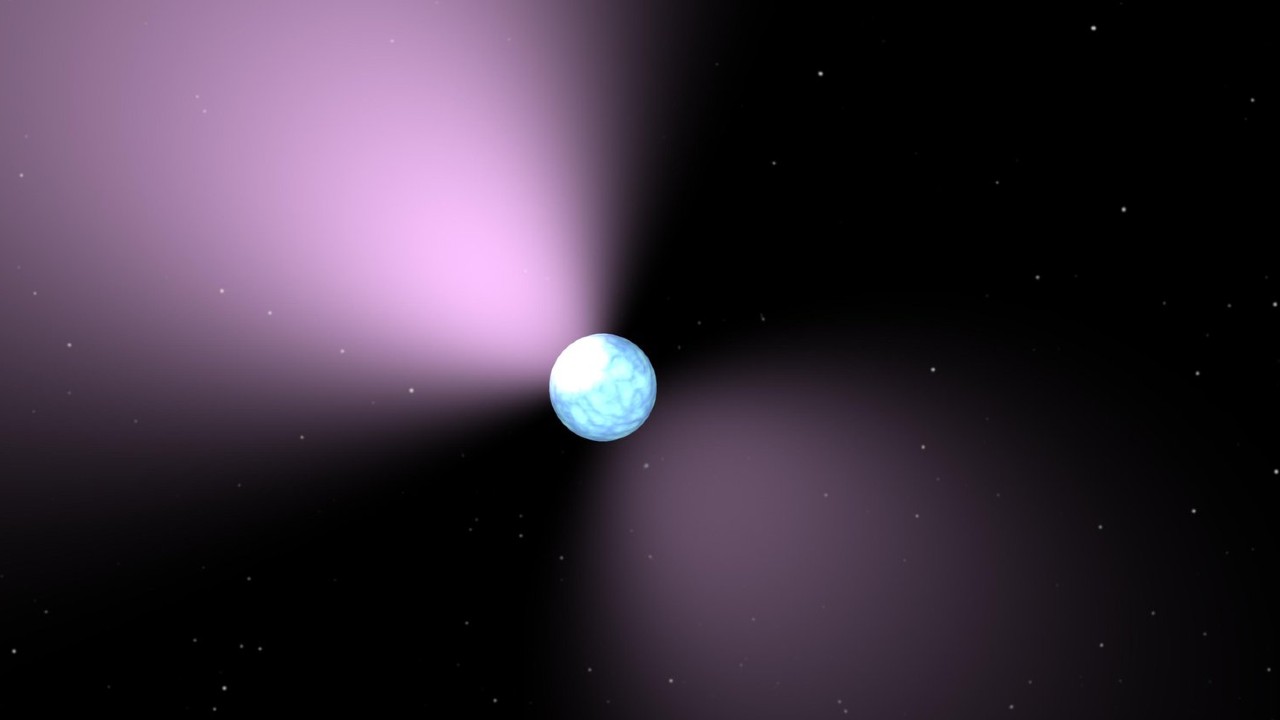What is the theory of general relativity? Understanding Einstein's space-time revolution
Here we explore what the theory of general relativity is and how it affects space-time.

General relativity is physicist Albert Einstein's understanding of how gravity affects the fabric of space-time.
The theory, which Einstein published in 1915, expanded the theory of special relativity that he had published 10 years earlier. Special relativity argued that space and time are inextricably connected, but that theory didn't acknowledge the existence of gravity.
Einstein spent the decade between the two publications determining that particularly massive objects warp the fabric of space-time, a distortion that manifests as gravity, according to NASA.
Related: The hunt for wormholes: How scientists look for space-time tunnels
How does general relativity work?
To understand general relativity, first, let's start with gravity, the force of attraction that two objects exert on one another. Sir Isaac Newton quantified gravity in the same text in which he formulated his three laws of motion, the "Principia."
The gravitational force tugging between two bodies depends on how massive each one is and how far apart the two lie, according to NASA Glenn Research Center. Even as the center of the Earth is pulling you toward it (keeping you firmly lodged on the ground), your center of mass is pulling back at the Earth. But the more massive body barely feels the tug from you, while with your much smaller mass, you find yourself firmly rooted thanks to that same force. Yet Newton's laws assume that gravity is an innate force of an object that can act over a distance.
Albert Einstein, in his theory of special relativity, determined that the laws of physics are the same for all non-accelerating observers, and he showed that the speed of light within a vacuum is the same no matter the speed at which an observer travels, according to Wired.
Breaking space news, the latest updates on rocket launches, skywatching events and more!
As a result, he found that space and time were interwoven into a single continuum known as space-time. And events that occur at the same time for one observer could occur at different times for another.
Related: What would happen if the speed of light was much lower?
As he worked out the equations for his general theory of relativity, Einstein realized that massive objects caused a distortion in space-time. Imagine setting a large object in the center of a trampoline. The object would press down into the fabric, causing it to dimple. If you then attempt to roll a marble around the edge of the trampoline, the marble would spiral inward toward the body, pulled in much the same way that the gravity of a planet pulls at rocks in space.
In the decades since Einstein published his theories, scientists have observed countless of phenomena matching the predictions of relativity.
General relativity FAQs answered by an expert
We asked Elena Giorgi, an assistant professor of mathematics at Columbia University a few commonly asked questions about general relativity.

Elena Giorgi is an assistant professor of mathematics at Columbia University in the group of Geometry & Analysis and Mathematical Physics. Giorgi's research interests are general relativity, partial differential equations and differential geometry.
What is general relativity?
General relativity is a physical theory about space and time and it has a beautiful mathematical description. According to general relativity, the spacetime is a 4-dimensional object that has to obey an equation, called the Einstein equation, which explains how the matter curves the spacetime.
What force is explained by general relativity?
General relativity explains gravity, and in this theory, it is not really a "force" anymore. The gravitational field comes out of the description of general relativity as a result of the curved spacetime.
When was the theory of general relativity established?
General Relativity was established in 1915 by Albert Einstein and the first solutions to the Einstein equation were found already in early 1916.
Is general relativity proven?
General relativity has passed all the experimental tests so far, but its applicability is expected to break down when [the] effects of quantum mechanics (the theory of the very small particles) should become dominant.
General relativity and gravitational lensing
Light bends around a massive object, such as a black hole, causing it to act as a lens for the things that lie behind it. Astronomers routinely use this method to study stars and galaxies behind massive objects.
The Einstein Cross, a quasar in the Pegasus constellation, according to the European Space Agency (ESA), and is an excellent example of gravitational lensing. The quasar is seen as it was about 11 billion years ago; the galaxy that it sits behind is about 10 times closer to Earth. Because the two objects align so precisely, four images of the quasar appear around the galaxy because the intense gravity of the galaxy bends the light coming from the quasar.
Related: What is quantum gravity?
In cases like Einstein's cross, the different images of the gravitationally lensed object appear simultaneously, but that isn't always the case. Scientists have also managed to observe lensing examples where, because the light traveling around the lens takes different paths of different lengths, different images arrive at different times, as in the case of one particularly interesting supernova.
General relativity and changes in Mercury's orbit
The orbit of Mercury is shifting very gradually over time due to the curvature of space-time around the massive sun, according to NASA.
As the closest planet to the sun, Mercury’s perihelion (the point along its orbit that it’s closest to the sun) is predicted to follow a slightly different direction over time. Under Newton’s predictions, gravitational forces in the solar system should advance Mercury's precession ( change in its orbital orientation) is measured to be 5,600 arcseconds per century (1 arcsecond is equal to 1/3600 of a degree). However, there is a discrepancy of 43 arcseconds per century, something Einstein's theory of general relativity accounts for. Using Einstein’s theory of curved space-time, the precession of Mercury’s perihelion should advance slightly more than under the predictions of Newton, since planets don’t orbit the sun in a static elliptical orbit.
Sure enough, several research papers published since the mid 20th century have confirmed Einstein's calculations of Mercury’s perihelion precession to be accurate.
In a few billion years, this wobble could even cause the innermost planet to collide with the sun or a planet.
Frame-dragging of space-time around rotating bodies
The spin of a heavy object, such as Earth, should twist and distort the space-time around it. In 2004, NASA launched the Gravity Probe B (GP-B). The axes of the satellite's precisely calibrated gyroscopes drifted very slightly over time, according to NASA, a result that matched Einstein's theory.
"Imagine the Earth as if it were immersed in honey," Gravity Probe-B principal investigator Francis Everitt, of Stanford University, said in a NASA statement about the mission.
"As the planet rotates, the honey around it would swirl, and it's the same with space and time. GP-B confirmed two of the most profound predictions of Einstein's universe, having far-reaching implications across astrophysics research."
Gravitational redshift
The electromagnetic radiation of an object is stretched out slightly inside a gravitational field. Think of the sound waves that emanate from a siren on an emergency vehicle; as the vehicle moves toward an observer, sound waves are compressed, but as it moves away, they are stretched out, or redshifted. Known as the Doppler Effect, the same phenomena occurs with waves of light at all frequencies.
In the 1960s, according to the American Physical Society, physicists Robert Pound and Glen Rebka shot gamma-rays first down, then up the side of a tower at Harvard University. Pound and Rebka found that the gamma-rays slightly changed frequency due to distortions caused by gravity.
Gravitational waves
Einstein predicted that violent events, such as the collision of two black holes, create ripples in space-time known as gravitational waves. And in 2016, the Laser Interferometer Gravitational Wave Observatory (LIGO) announced that it had detected such a signal for the first time.
That detection came on Sept. 14, 2015. LIGO, made up of twin facilities in Louisiana and Washington, had recently been upgraded, and were in the process of being calibrated before they went online. The first detection was so large that, according to then-LIGO spokesperson Gabriela Gonzalez, it took the team several months of analysis to convince themselves that it was a real signal and not a glitch.
Related: Phantom energy and dark gravity: Explaining the dark side of the universe
"We were very lucky on the first detection that it was so obvious," she said during the 228 American Astronomical Society meeting in June 2016.
Since then, scientists have begun quickly catching gravitational waves. All told LIGO and its European counterpart Virgo have detected over 100 gravitational-wave events, according to the Gravitational Wave Open Science Center.
Those collisions have included unusual events like a collision with an object that scientists can't definitively identify as a black hole or neutron star, merging neutron stars accompanied by a bright explosion, mismatched black holes colliding and more.
Observing neutron stars
In 2021 research published in the journal Physical Review X, challenged several of Einstein's predictions by observing a double-pulsar system around 2,400 light-years from Earth. Each of the seven predictions of general relativity was confirmed by the study.
Pulsars are a type of neutron star that appears to pulse due to beams of electromagnetic radiation and that are emitting from their magnetic poles.
The pulsar test subjects spin very fast - around 44 times a second - and are 30% more massive than the sun but are only 15 miles (around 24 kilometers) in diameter, making them incredibly dense. This means that their gravitational pull is immense, for example, on the surface of a neutron star gravity is around 1 billion times stronger than its pull on Earth. This makes neutron stars a great test subject to challenge predictions in Einstein's theories, such as the ability of gravity to bend light.
"We follow the propagation of radio photons emitted from a cosmic lighthouse, a pulsar, and track their movements in the strong gravitational field of a companion pulsar," Professor Ingrid Stairs from the University of British Columbia at Vancouver said in a statement.
"We see for the first time how the light is not only delayed due to a strong curvature of spacetime around the companion but also that the light is deflected by a small angle of 0.04 degrees that we can detect. Never before has such an experiment been conducted at such a high spacetime curvature" Stairs adds.
Additional resources
Read more about general relativity in the book Relativity: The Special and the General Theory - 100th Anniversary Edition. Explore the Nature of Space and Time (Isaac Newton Institute Series of Lectures, 3) and The Physics Book: Big Ideas Simply Explained.

Nola Taylor Tillman is a contributing writer for Space.com. She loves all things space and astronomy-related, and always wants to learn more. She has a Bachelor's degree in English and Astrophysics from Agnes Scott College and served as an intern at Sky & Telescope magazine. She loves to speak to groups on astronomy-related subjects. She lives with her husband in Atlanta, Georgia. Follow her on Bluesky at @astrowriter.social.bluesky


